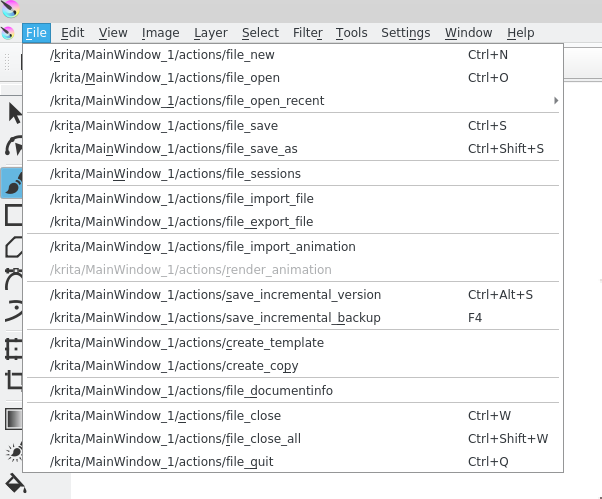I believe some kind of schema would have to be installed on the system. Going even further, the service could be made activatable, so that when a dbus message is sent, it gets launched if it's not running yet.
Last time I tried registering a dbus service for an AppImage I had to deploy some files to well-known dbus locations. So, in this case, the Krita AppImage will have to do this "deployment". Tools like AppImageLauncher and appimaged can also gain this ability.
Regarding the name of the application at runtime. This depends on how the AppImage/AppDir was built in this case it's using a custom AppRun that doesn't set the binary name right. AFAIK Krita developers use a custom build script, so there is no much we can do there. I could recommend using appimage-builder, which have been used to successfully pack complex applications such as OBS-Studio. But it will require to create a new recipe.

I discovered this with krita. In particular, the krita-4.2.9-x86_64.appimage with sha1sum 61933e6b86a348f155824b588ecdddf235133492.
grabbing krita's PID with xprop on its main window, then looking the peer address up in
busctl --user listlets me get at all the "actions" that it has, which includes entries in the menus, and buttons on toolbars i think.I can now do silly things like
resulting in the menus changing their texts:
However, having to find krita by obtaining its PID, and then the peer address on the user bus is much less convenient than accessing it via a proper name.
For one, the entry shows up with the name "AppRun", where i would expect "krita".
Compare how krita and the xfce4-appfinder (not an appimage) show up in
busctl --user listand i can call it with its "proper name" as well:
busctl --user call org.xfce.Appfinder /org/xfce/Appfinder org.xfce.Appfinder OpenWindow bs 0 ""I'm not exactly sure what can or has to be done, but at the very least the process name should be fixed to read "krita". In order to have the proper name, I believe some kind of schema would have to be installed on the system. Going even further, the service could be made activatable, so that when a dbus message is sent, it gets launched if it's not running yet.
Thanks for your time.
PS:
why? because i can.